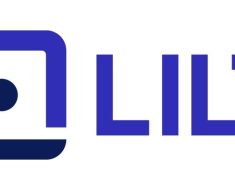The following article first appeared in the Insights section of Marcum LLP’s website. It is reposted here with permission.
Generative AI is reshaping the business landscape, with Marcum Technology and countless other companies at the forefront of investigating how best to integrate it into business today.
Generative AI utilizes advanced deep learning models to generate highly personalized content, in some cases effectively mimicking human language patterns.
Its applications span numerous industries and functions, enabling businesses to excel in content creation, product design, and task automation.
Incorporating generative AI is now imperative for businesses seeking to thrive in an era where innovation reigns supreme.
As generative AI continues to evolve, its adoption is not a choice but a necessity for those determined to succeed in the future of business.
However, the success of its integration hinges on how effectively companies incorporate and secure this progressive technology.
Streamlining Content Creation
Generative AI technology is having a profound impact on business leaders by revolutionizing various aspects of their operations.
One significant way in which generative AI assists business leaders is through content creation.
Generative AI can speed up the writing process when it comes to research, outlines, and drafting specific copy.
Technology can help businesses stay ahead of the curve by aiding the creation of unique and innovative content.
With an experienced writer and editor at the helm, marketers can accelerate the process of writing blogs, meta descriptions, and social media copy.
With generative AI models like GPT-4 and BERT, business leaders can automate aspects of content generation, saving time and resources.
This technology can help businesses stay ahead of the curve by aiding the creation of unique and innovative content that sets them apart from their competitors.
Enhancing Product Design
Generative AI has the potential to enhance creativity in a variety of industries.
In the fashion industry, generative AI can be used to create new designs and patterns. In the hospitality industry, it can be used for recipe generation based on customer preferences and inventory ready to go out of date soonest.
Generative AI has the potential to enhance creativity in a variety of industries.
Moreover, generative AI can also aid business leaders in product design.
By leveraging models like MidJourney and the latest DALL-E, business leaders can input textual descriptions and receive unique visual representations and 3D models, streamlining the design process and fostering innovation.
This not only enhances the efficiency of product development but also enables the creation of more visually appealing and customer-centric products.
Transforming Customer Interactions
Generative AI can also be used to improve the customer experience.
For example, chatbots powered by generative AI can provide customers with instant support, answering their questions and resolving their issues in real time.
By analyzing customer data and utilizing generative AI models, marketers can better personalize marketing messages.
This can help to reduce wait times and improve customer satisfaction.
By analyzing customer data and utilizing generative AI models, marketers can better personalize marketing messages and product recommendations, making customers feel more valued and increasing the likelihood of repeat business.
Improving Decision-Making
One of the most significant benefits of generative AI is its ability to increase efficiency.
By automating tasks that were previously done by humans, businesses can save time and money.
This unique technology can simulate production scenarios to find hidden insights, identify improvements, and boost predictive accuracy.
For example, generative AI can dramatically reduce manual efforts in IT operations, freeing up IT staff to focus on more complex tasks.
Additionally, this unique technology can simulate production scenarios to find hidden insights, identify improvements, and boost predictive accuracy—all without disrupting operations.
The potential benefits of generative AI for business leaders are abundant. And with the proper guidance to safeguard companies’ data and their client’s data, generative AI presents opportunities for business growth by fostering innovative and cost-saving measures.
Potential Security Threats
While generative AI technology has the potential to revolutionize business processes and enhance customer experiences, it also presents certain risks that business leaders need to be aware of and proactively mitigate.
Understanding these potential threats is crucial for leveraging the power of generative AI responsibly.
For example, generative AI can pose significant cybersecurity risks. Hackers can use generative AI to create sophisticated attacks that are difficult to detect and defend against.
Cybercriminals could inject bad data into an AI engine or force a training model to change its results.
Generative AI technology also presents certain risks that business leaders need to be aware of and proactively mitigate.
To mitigate these risks, businesses must be vigilant and ensure that they are having third parties perform advanced testing of these solutions and ensure that they are deploying Generative AI using secure platforms and APIs.
Another risk is the potential for malicious uses of generative AI technology.
As AI models become more sophisticated, they can be exploited for unethical purposes, such as generating fake reviews, creating personalized phishing emails, or fabricating evidence.
These malicious uses pose severe threats to business credibility, customer trust, and data privacy.
Internal Threats
Generative AI, while a powerful tool for various applications, should be carefully reviewed to ensure that the selected platform is properly secured.
This is due to the inherent risks organizations face around data privacy and security. The risk is especially true for “public” Generative AI models located outside of your enterprise domain.
Mishandling of sensitive information within Generative AI models can lead to data breaches and privacy violations.
Mishandling of sensitive information within Generative AI models can lead to data breaches and privacy violations, potentially damaging an organization’s reputation and legal standing.
Businesses must exercise extreme caution and employ robust data protection measures when considering AI applications, ensuring that sensitive information remains in the hands of trusted and secure systems specifically designed for data storage and management.
Safeguarding Against Threats
To mitigate these AI risks, business leaders should take several steps.
Firstly, it is essential to collaborate with security and risk management leaders, like Marcum Technology, to identify potential vulnerabilities and establish robust measures to protect against security breaches.
Businesses should implement clear guidance on the responsible use of generative AI technology.
Secondly, businesses should implement clear guidance on the responsible use of generative AI technology, ensuring that it aligns with ethical standards and legal requirements.
Finally, companies should seek advice on the best, most responsible vendors for AI integration and how to incorporate it securely and effectively.
About the author: Robert Drover is principal and vice president of business solutions with Marcum Technology LLC.




